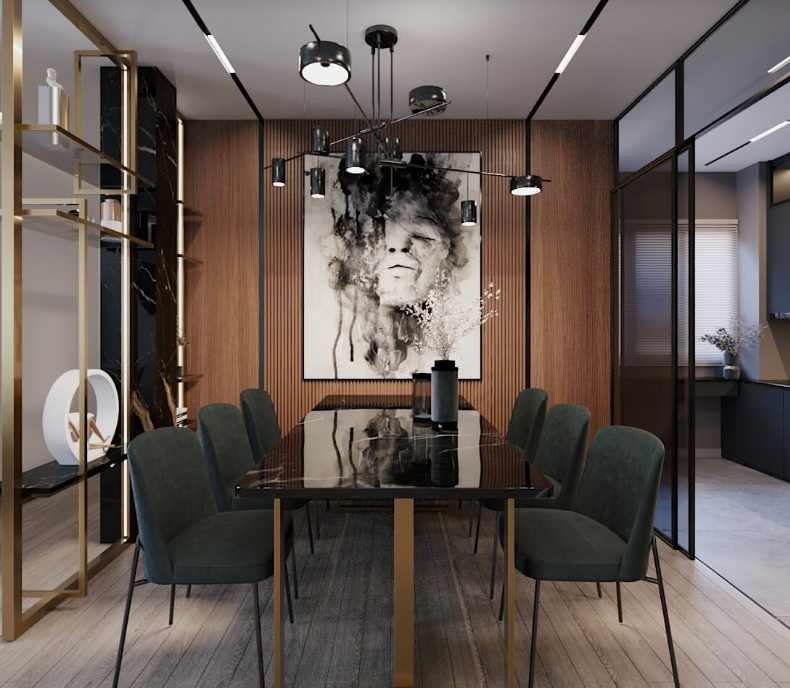INTRODUCTION
Probably the most impactful way of refreshing and enhancing your living space is through residential interior painting. Whether modernizing your home, creating a relaxing atmosphere, or simply just updating some rooms, painting is a relatively easy and cost-effective solution. By carefully selecting the right colors, finishes, and techniques, interior painting can completely transform the look and feel of a room, improving the aesthetics of your home and boosting its overall value.
Why Choose Residential Interior Painting?
Painting inside your house can make a world of difference. A fresh coat of paint could open up a dull space immediately, bring in a new style, and enhance your entire home. One of the main reasons interior painting is done by homeowners is that it allows them to personalize their environment. What catches your attention most-between soft neutrals, bold colors, or even accent walls-can be expressed via paint to evoke any mood you might desire.
Second, residential interior painting also has other physical benefits. For one, paint serves as a protective covering of the walls from damages. Using superior paint can create a protective layer against dust, dirt, and moisture that would otherwise interfere with the integrity of the surfaces. Paint will also cover imperfections, marks, or stains on walls, giving them a shiny, clean appearance. Another benefit of painting is better air quality in the house. Many of the new paints are formulated with less VOCs. This helps provide a healthier environment for your family.
Color Choice
Colors should be decided upon carefully when it comes to making a room feel good. Light colors, such as whites, off-whites, and pastels, can cause a space to feel larger and more open. They are particularly helpful in smaller rooms or spaces that receive little natural lighting. Richer colors, including navy blues, rich burgundies, and deep forest greens, can tend to warm up a space, making it feel more intimate and sophisticated. They work best in large areas, especially those used for relaxation, such as living rooms and bedrooms.
Another important aspect that defines color choice in choosing colors is the room’s use. Therefore, soothing colors such as light blues or greens go well with the bedroom as these help one relax and sleep. Warm shades can be ideal for dining rooms or kitchen areas. These warm shades help in making a home warm and cozy. Vibrant accents of bright colours like yellows or oranges can be added to a room and not clutter a space.
Preparation: The Secret to a Flawless Finish
Preparing for a flawless paint job starts before you put paintbrush to wall. Prepare the room and surfaces properly; otherwise, you might end up spending extra time and effort correcting errors. This includes covering furniture, sheets or plastic under drop cloths to protect the floors, and taping off baseboards and even windows and ceiling, for instance. Equally important is preparing the walls-get those surfaces clean of dust, dirt, grease accumulation and spackle any holes or cracks so that the finish is evenly smooth.
If the walls have been painted previously, then you may have to sand or prime the walls before applying new paint. You will experience better adhesion with fresh paint that lasts longer. Proper preparation requires some extra time but is essential in achieving an excellent result.
The Right Tools and Techniques
Applying the right tools is a significant difference in the outcome of your work. Use the best-quality brush, roller, and painter’s tape for fine detail and smooth application. The roller is best suited for large, flat surfaces. The brush is necessary when edges, corners, and trim work are involved. The roll cover will also determine texture and finish. Therefore, pick one that is suitable to the surface you are painting: whether it is smooth, textured, or rough.
When painting, apply several thin coats in preference to applying one heavy coat. This will give better coverage and hence a nice, even smooth finish. It is also wise to allow each coat to dry completely before applying the next, so that streaks and drips are avoided with uneven patches.
Hiring a Professional vs. Doing It Yourself
While painting your house can be a very rewarding DIY project, some homeowners prefer to get professionals to do the job because they promise the best results. Professional painters have the skills, experience, and tools to complete the job quickly and efficiently, saving you time and effort. They know how to handle tricky areas like vaulted ceilings, intricate trim, or textured surfaces.
If you’re unsure whether to tackle the job yourself or hire a professional, consider the size of the project and your comfort level with painting. Smaller rooms or touch-up work may be easy enough to do yourself, while larger spaces or jobs requiring multiple coats might be better suited for a pro.
Conclusion
Residential interior painting is a budget-friendly way to refresh up your home, whether you wish to breathe a new sense into a room or completely alter the atmosphere of your living quarters. Proper preparation, good color choices, and techniques of application result in a more vibrant, welcoming environment that is tailored to your personal needs. Whether you do it yourself or hire a professional, an efficiently painted job will beautify your home and enhance its functionality to make living there a joy.



